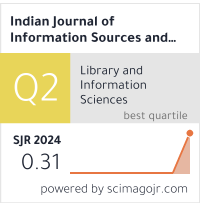Tourism Management Information System: A Study of its Adoption and Impact on Destination Management
DOI:
https://doi.org/10.51983/ijiss-2024.14.3.27Keywords:
Tourism, Tourism Management Information System, Destination ManagementAbstract
Tourism has evolved from being a luxury or daring
person's occasional hobby. These days, everyone works in the
tourism sector, whether it is in the hospitality, entertainment, or
catering industries. In actuality, tourism has a significant
economic influence on the nation it visits. From short-term to
long-term improvements, it raises the growth rate, national
profit, investment, and popularity of the nation. One significant
trend in the travel and tourism sector is the increased focus on
quality from the customer's point of view. The implementation
of Tourism Management Information Systems [TMIS] has
revolutionised the operational and decision-making processes of
destination management organisations [DMOs]. The effect of
TMIS on destination management is still not well understood,
though. The implementation and influence of TMIS on
destination management are examined in this study, along with
how it affects operational effectiveness, destination
competitiveness, and decision-making. A mixed-methods
approach was used, incorporating case studies of DMOs in
[region/country], interviews, and surveys. The results show that
the implementation of TMIS increases the capacity for making
decisions, boosts operational effectiveness, and increases the
competitiveness of destinations. Nonetheless, difficulties with
user resistance, system integration, and data quality were noted.
The report offers guidance to DMOs looking to use TMIS for
efficient destination management and the growth of sustainable
tourism.
Downloads
Published
How to Cite
Issue
Section
License
Copyright (c) 2024 The Research Publication

This work is licensed under a Creative Commons Attribution-NonCommercial-NoDerivatives 4.0 International License.









